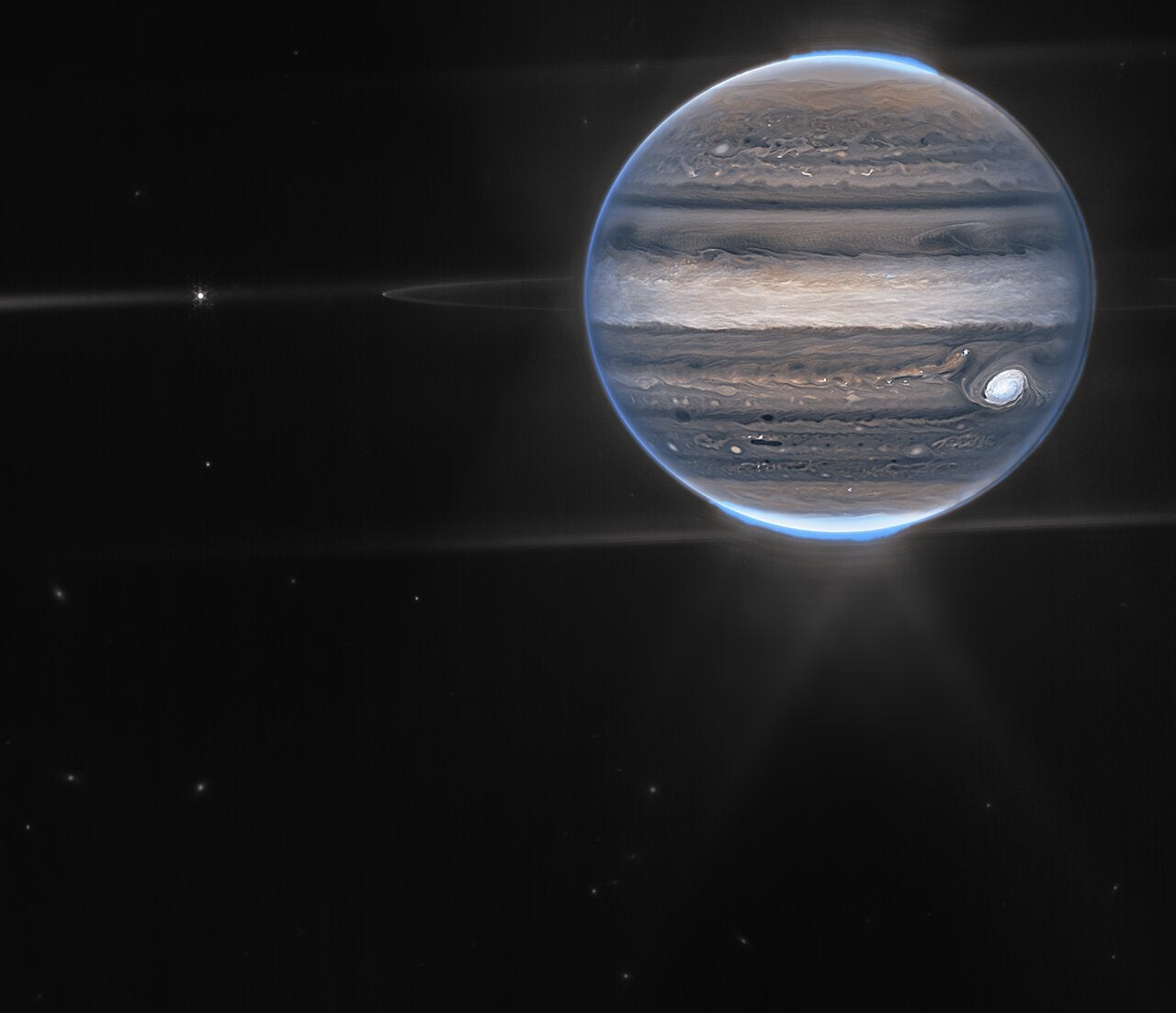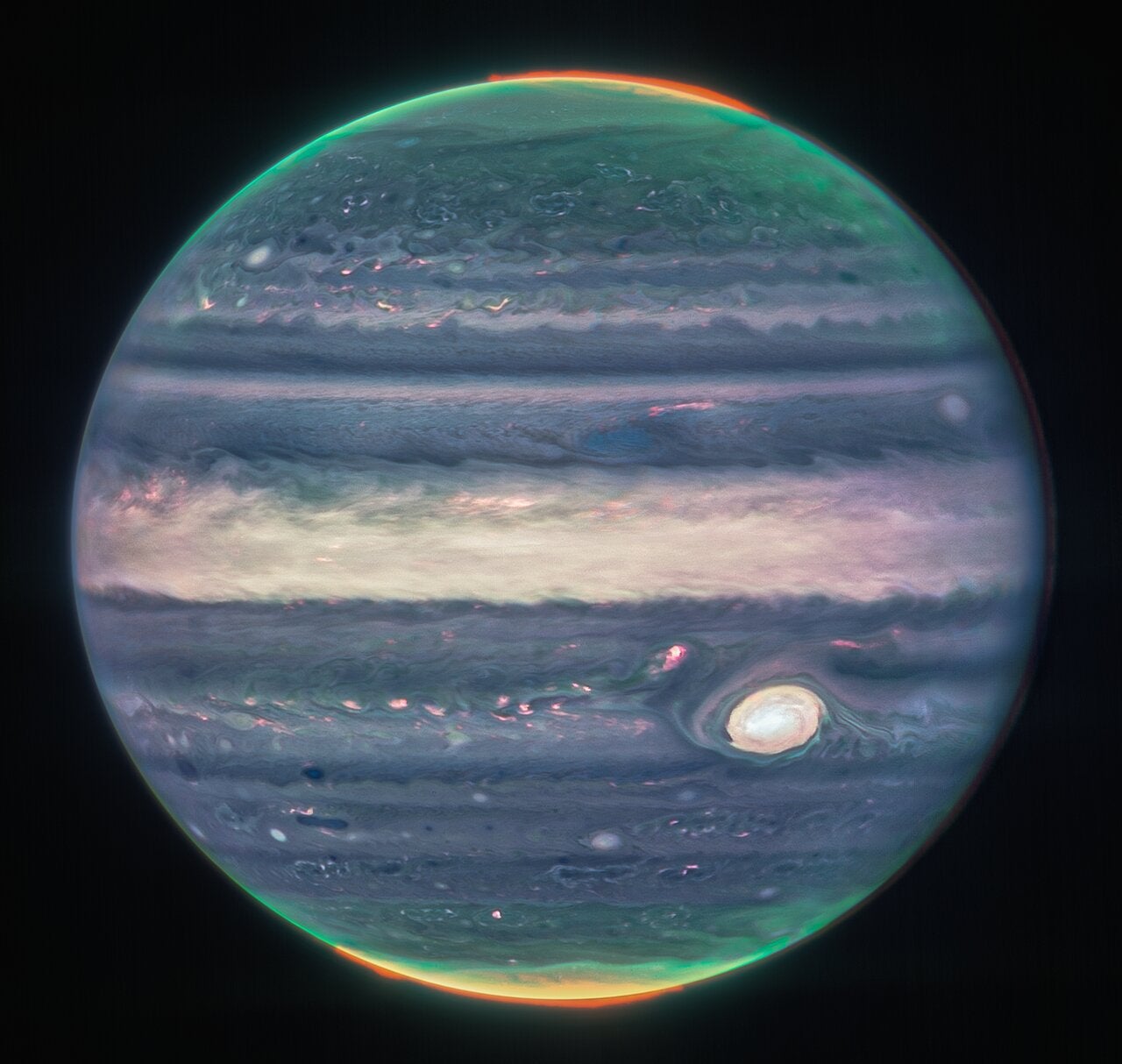Nasa’s James Webb telescope reveals astonishing new picture of Jupiter
The new images were actually stitched together from a number of Jupiter pictures
Your support helps us to tell the story
From reproductive rights to climate change to Big Tech, The Independent is on the ground when the story is developing. Whether it's investigating the financials of Elon Musk's pro-Trump PAC or producing our latest documentary, 'The A Word', which shines a light on the American women fighting for reproductive rights, we know how important it is to parse out the facts from the messaging.
At such a critical moment in US history, we need reporters on the ground. Your donation allows us to keep sending journalists to speak to both sides of the story.
The Independent is trusted by Americans across the entire political spectrum. And unlike many other quality news outlets, we choose not to lock Americans out of our reporting and analysis with paywalls. We believe quality journalism should be available to everyone, paid for by those who can afford it.
Your support makes all the difference.Nasa’s James Webb Space Telescope has revealed astonishing new pictures of Jupiter.
The images show our near neighbourhood in precise detail, and scientists help that it could further reveal what is happening on the chaotic planet.
Its vast storms, swirling winds and blazing auroras are all visible in the image, which was taken from the telescope’s near-infrared camera (NIR).
That camera has three infrared filters that are able to showcase details of the planet. But it means that its images must be mapped into visible light, and the blue on the image is the shorter wavelengths.

It revealed one image that showed Jupiter as it floats in space, surrounded by a background of stars. The widefield view shows not only Jupiter but also its faint rings, as well as two tiny moons called Amalthea and Adrastea.
The image also includes fuzzy spots, likely galaxies that have snuck into the image.
The new images were actually stitched together from a number of images of Jupiter, taken from images in July. Scientists working on the telescope worked with a citizen scientist called Judy Schmidt to process them into one of the newly released images.

The processing used a variety of filters to help the specific parts of Jupiter’s composition shine. The auroras at the north and south pole shine bright in a redder filter; the hazes around those same areas are lit up by a yellow and green one that picks them out as they swirl; and a blue filter helps show the light that is reflecting off a main cloud.
In the image the “great red spot” can also be seen, though it is a bright white in the image itself. That is because of the large amount of light that is reflecting off it and other clouds.
While much of the excitement about the James Webb Space Telescope was about the way it would allow us to peer deeper into the universe than ever before, it has already been sending back new images of objects that are much closer to home.
But the telescope has also been busy looking deep into our cosmos. The first image it sent back to Earth was the deepest image ever taken of our universe – showing its oldest and furthest recesses.

Join our commenting forum
Join thought-provoking conversations, follow other Independent readers and see their replies
Comments